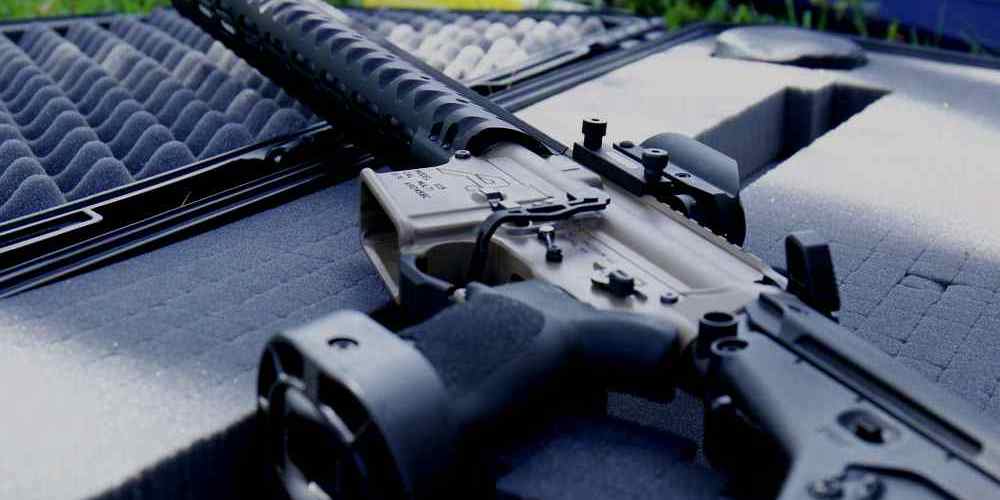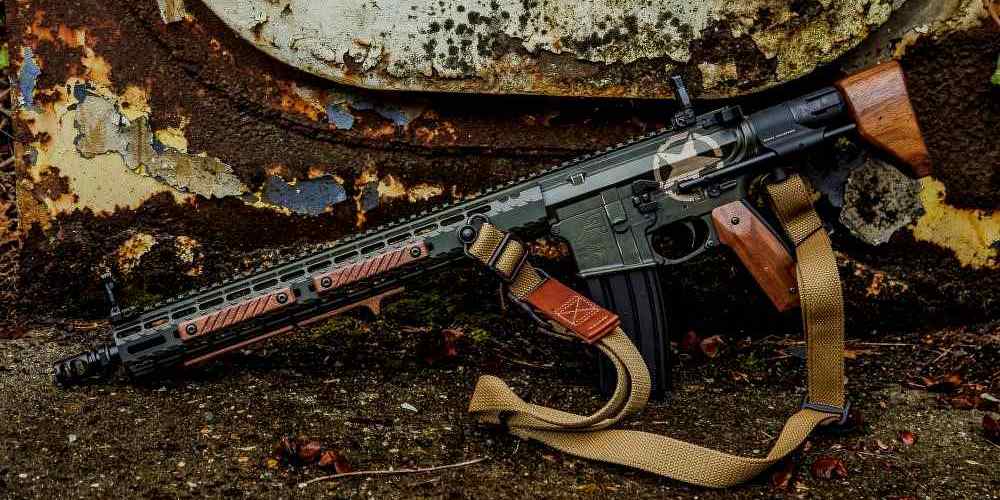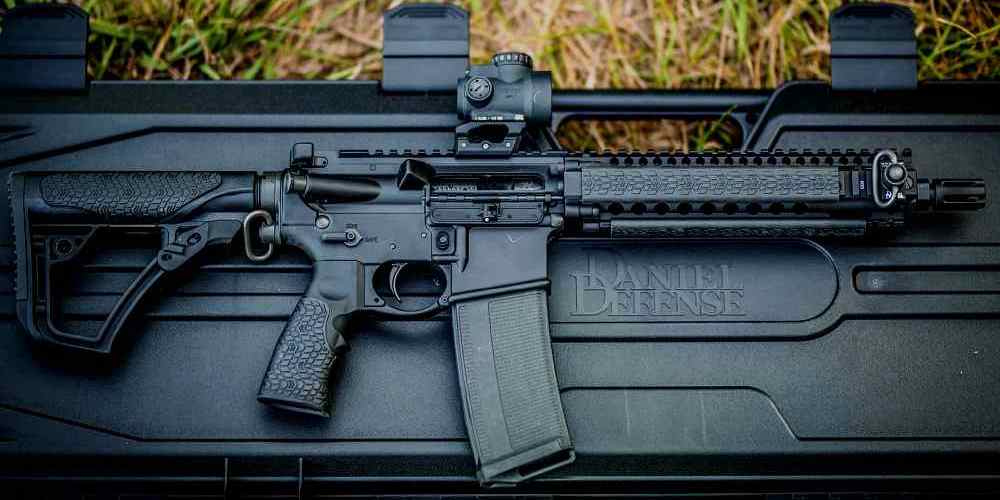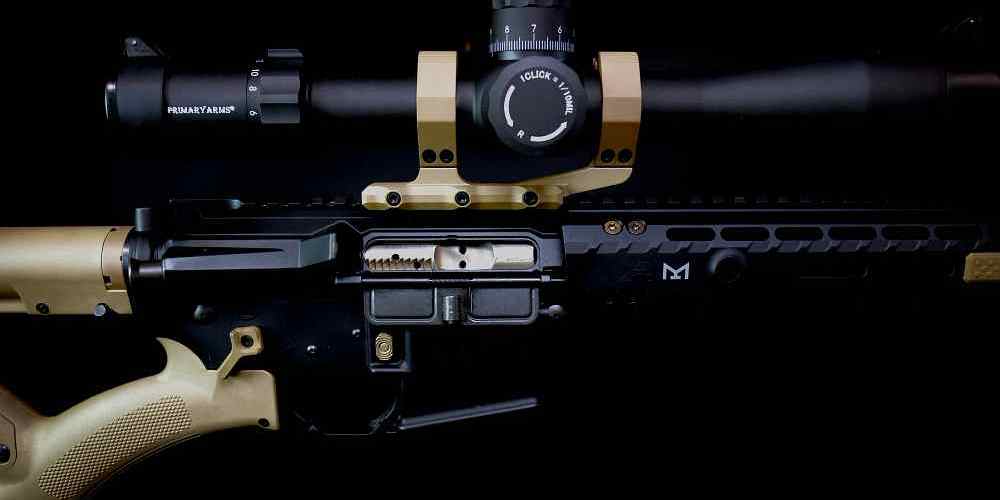“Strength and Stability: Achieving the Perfect Balance in Your AR15 Build”
Lightweight vs Heavy-Duty Components: Finding the Right Balance
When it comes to building your AR15, one of the key decisions you’ll need to make is finding the right balance between weight and durability. Lightweight components can make your rifle easier to handle and carry, while heavy-duty components can increase the overall durability and longevity of your build. Finding the right balance between these two factors is crucial to creating a rifle that meets your needs and preferences. One of the first things to consider when balancing weight and durability in your AR15 build is the intended use of the rifle. If you plan on using your rifle for long-range shooting or hunting, you may want to prioritize durability over weight. Heavy-duty components such as a stainless steel barrel and reinforced receiver can help ensure that your rifle can withstand the rigors of regular use in the field. On the other hand, if you plan on using your rifle for competition shooting or tactical applications, you may want to prioritize weight savings. Lightweight components such as a carbon fiber handguard and aluminum receiver can help reduce the overall weight of your rifle, making it easier to handle and maneuver in fast-paced shooting scenarios. Another factor to consider when balancing weight and durability in your ar15 build is your own physical capabilities. If you have limited strength or mobility, a lighter rifle may be more comfortable and easier for you to handle. On the other hand, if you have the strength and endurance to handle a heavier rifle, you may prefer the added durability and stability that heavy-duty components can provide. When selecting components for your AR15 build, it’s important to carefully consider the trade-offs between weight and durability. For example, a lightweight polymer stock may be more comfortable to carry for long periods of time, but it may not be as durable as a heavier steel stock. Similarly, a lightweight aluminum handguard may be easier to maneuver, but it may not provide the same level of protection as a heavier steel handguard. Ultimately, the key to finding the right balance between weight and durability in your AR15 build is to carefully consider your own needs and preferences. Take the time to research different components and their respective weights and durability ratings, and choose the ones that best align with your intended use of the rifle. In conclusion, balancing weight and durability in your AR15 build is a crucial decision that can have a significant impact on the performance and handling of your rifle. By carefully considering your intended use, physical capabilities, and preferences, you can create a rifle that strikes the perfect balance between weight savings and durability. Whether you prioritize lightweight components for ease of handling or heavy-duty components for increased durability, finding the right balance is key to creating a rifle that meets your needs and performs at its best.
Choosing the Best Materials for Weight Reduction and Strength
When it comes to building your AR15, one of the key considerations is finding the right balance between weight reduction and durability. Choosing the best materials for your build can make a significant difference in the overall performance and handling of your rifle. In this article, we will discuss some of the top materials to consider for weight reduction and strength in your AR15 build. One of the most popular materials for AR15 builds is aluminum. Aluminum is lightweight, durable, and corrosion-resistant, making it an excellent choice for reducing weight without sacrificing strength. Many AR15 receivers, handguards, and other components are made from aluminum to help keep the overall weight of the rifle down. Another material to consider for weight reduction is polymer. Polymer is a synthetic material that is lightweight and impact-resistant, making it a great choice for parts like pistol grips, stocks, and handguards. Polymer components can help shave off some weight from your AR15 build while still providing the durability and strength you need for reliable performance. For those looking to prioritize strength and durability in their AR15 build, steel is a top choice. Steel is a heavy material compared to aluminum and polymer, but it offers unmatched strength and durability. Steel barrels, bolts, and other components can withstand high levels of stress and abuse, making them ideal for heavy-duty use. Carbon fiber is another material that has gained popularity in the firearms industry for its lightweight and high-strength properties. Carbon fiber components are often used in handguards, barrels, and stocks to reduce weight while maintaining durability. Carbon fiber is also corrosion-resistant, making it a great choice for AR15 builds that will be exposed to harsh environments. When choosing materials for your AR15 build, it’s essential to consider the intended use of the rifle. If you are building a lightweight, competition rifle, aluminum and polymer components may be the best choice. However, if you are building a rifle for tactical or hunting purposes, steel and carbon fiber components may be more suitable for the added strength and durability they provide. It’s also important to consider the overall balance of weight and durability in your AR15 build. While reducing weight is essential for improved handling and maneuverability, sacrificing durability can lead to reliability issues and potential malfunctions. Finding the right balance of materials that offer both weight reduction and strength is key to building a high-performance AR15. In conclusion, choosing the best materials for weight reduction and strength in your AR15 build is crucial for achieving optimal performance and reliability. Aluminum, polymer, steel, and carbon fiber are all excellent choices for different components of your rifle, depending on your specific needs and preferences. By carefully selecting materials that offer the right balance of weight and durability, you can build a custom AR15 that meets your requirements and exceeds your expectations.
Optimal Barrel Length and Profile for Balance and Durability
When it comes to building your AR15, finding the perfect balance between weight and durability is crucial. One of the key components that can greatly impact this balance is the barrel length and profile. Choosing the optimal barrel length and profile for your AR15 build can make a significant difference in the overall performance and handling of your rifle. Barrel length plays a critical role in the balance of your AR15. A longer barrel typically provides better accuracy and velocity, while a shorter barrel offers improved maneuverability and reduced weight. Finding the right balance between these factors is essential to ensure that your AR15 meets your specific needs and preferences. In terms of durability, the profile of the barrel also plays a significant role. The profile refers to the shape and thickness of the barrel, which can impact its strength and resistance to heat and wear. A thicker profile barrel is generally more durable and can withstand higher rates of fire, making it ideal for heavy use and extended shooting sessions. However, a thicker barrel profile also adds weight to your AR15, which can affect its overall balance and handling. On the other hand, a thinner profile barrel is lighter and offers better maneuverability, but may not be as durable as a thicker profile barrel. Finding the right balance between weight and durability is essential to ensure that your AR15 performs optimally in various shooting scenarios. When selecting the optimal barrel length and profile for your AR15 build, it’s important to consider your intended use for the rifle. If you plan on using your AR15 for long-range shooting or precision shooting competitions, a longer barrel with a heavier profile may be more suitable. This will provide better accuracy and stability, allowing you to make precise shots at extended distances. On the other hand, if you need a lightweight and maneuverable rifle for tactical or hunting purposes, a shorter barrel with a thinner profile may be more appropriate. This will allow you to move quickly and easily through various shooting positions, while still maintaining a level of durability that can withstand the rigors of field use. Ultimately, finding the right balance between weight and durability in your AR15 build comes down to personal preference and intended use. By carefully considering the optimal barrel length and profile for your specific needs, you can create a rifle that offers the perfect combination of accuracy, maneuverability, and durability. In conclusion, the barrel length and profile are critical factors to consider when balancing weight and durability in your AR15 build. By choosing the right combination of length and profile for your specific needs, you can create a rifle that performs optimally in various shooting scenarios. Whether you prioritize accuracy, maneuverability, or durability, finding the perfect balance will ensure that your AR15 meets your expectations and performs flawlessly every time you pull the trigger.
Stock and Handguard Options for Balancing Weight and Durability
When it comes to building your AR15, one of the key considerations is finding the right balance between weight and durability. The stock and handguard options you choose can have a significant impact on the overall feel and performance of your rifle. In this article, we will explore some of the options available to help you strike the perfect balance between weight and durability. Let’s start with stocks. The stock of your AR15 plays a crucial role in how comfortable and stable your rifle feels when shouldered. There are a variety of stock options available, ranging from traditional fixed stocks to adjustable and collapsible stocks. Fixed stocks are typically the heaviest option but offer the most stability. Adjustable and collapsible stocks are lighter and offer more versatility in terms of length of pull, but may not be as sturdy as fixed stocks. When choosing a stock for your AR15 build, consider how you will be using the rifle. If you are primarily shooting from a bench or prone position, a fixed stock may be the best option for maximum stability. If you need a more versatile stock for different shooting positions or for use with body armor, an adjustable or collapsible stock may be a better choice. Next, let’s talk about handguards. The handguard of your AR15 serves multiple purposes, including protecting your hands from the heat generated by the barrel and providing a mounting platform for accessories such as lights, lasers, and grips. Handguards come in a variety of materials, including aluminum, polymer, and carbon fiber. Aluminum handguards are durable and offer excellent heat dissipation, but they can be heavy. Polymer handguards are lightweight and affordable, but may not be as durable as aluminum. Carbon fiber handguards are the lightest option and offer excellent heat dissipation, but they can be expensive. When choosing a handguard for your AR15 build, consider how much weight you are willing to add to your rifle in exchange for durability and heat dissipation. If weight is a primary concern, a carbon fiber handguard may be the best option. If durability is more important to you, an aluminum handguard may be the way to go. In conclusion, finding the right balance between weight and durability in your AR15 build is essential for achieving optimal performance. When selecting stocks and handguards for your rifle, consider how you will be using the rifle and what features are most important to you. By carefully weighing your options and choosing components that best suit your needs, you can build a rifle that is both lightweight and durable, allowing you to shoot comfortably and confidently in any situation.
Finding the Perfect Optic for Your AR15 Build: Balancing Weight and Durability
When it comes to building your AR15, there are a lot of factors to consider. One of the most important decisions you’ll need to make is choosing the right optic for your rifle. Finding the perfect balance between weight and durability is crucial to ensuring that your AR15 performs at its best. Optics come in a wide range of styles and configurations, each with its own set of pros and cons. When it comes to weight, lighter optics are generally preferred for their ease of handling and maneuverability. However, lighter optics may sacrifice durability in favor of reducing weight. On the other hand, heavier optics tend to be more durable but can add extra weight to your rifle, which may affect its balance and overall performance. When choosing an optic for your AR15 build, it’s important to consider how you plan to use your rifle. If you’re a competitive shooter or a hunter who needs to move quickly and shoot accurately, a lightweight optic may be the best choice for you. On the other hand, if you’re a tactical shooter or a military or law enforcement professional who needs a rugged optic that can withstand harsh conditions, durability should be your top priority. One way to strike a balance between weight and durability is to opt for a high-quality optic that is made from lightweight yet durable materials. For example, optics made from aircraft-grade aluminum or carbon fiber are both lightweight and strong, making them an excellent choice for AR15 builds. These materials are also resistant to corrosion and wear, ensuring that your optic will last for years to come. Another factor to consider when choosing an optic for your AR15 build is the type of reticle you prefer. Reticles come in a variety of styles, including red dot, holographic, and traditional crosshair reticles. Each type of reticle has its own set of advantages and disadvantages, so it’s important to choose one that suits your shooting style and preferences. Red dot and holographic reticles are popular choices for AR15 builds because they provide quick target acquisition and are easy to use in fast-paced shooting situations. However, these types of reticles may be more prone to damage than traditional crosshair reticles, so durability should be a consideration when choosing between them. Ultimately, the best optic for your AR15 build will depend on your individual needs and preferences. By carefully considering factors such as weight, durability, and reticle type, you can find an optic that strikes the perfect balance between performance and reliability. Whether you’re a competitive shooter, a hunter, or a tactical professional, choosing the right optic for your AR15 build is essential to maximizing your rifle’s potential.






